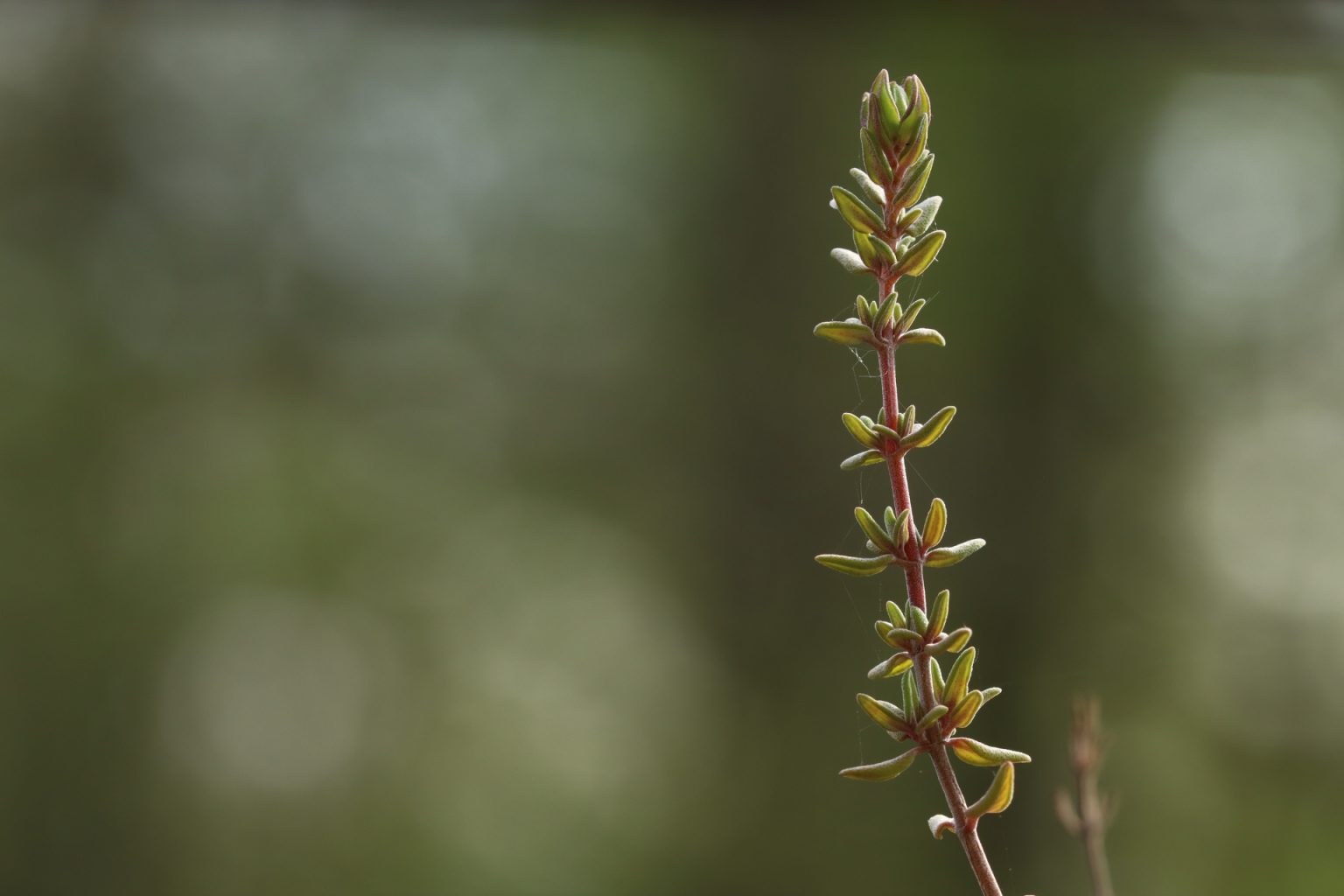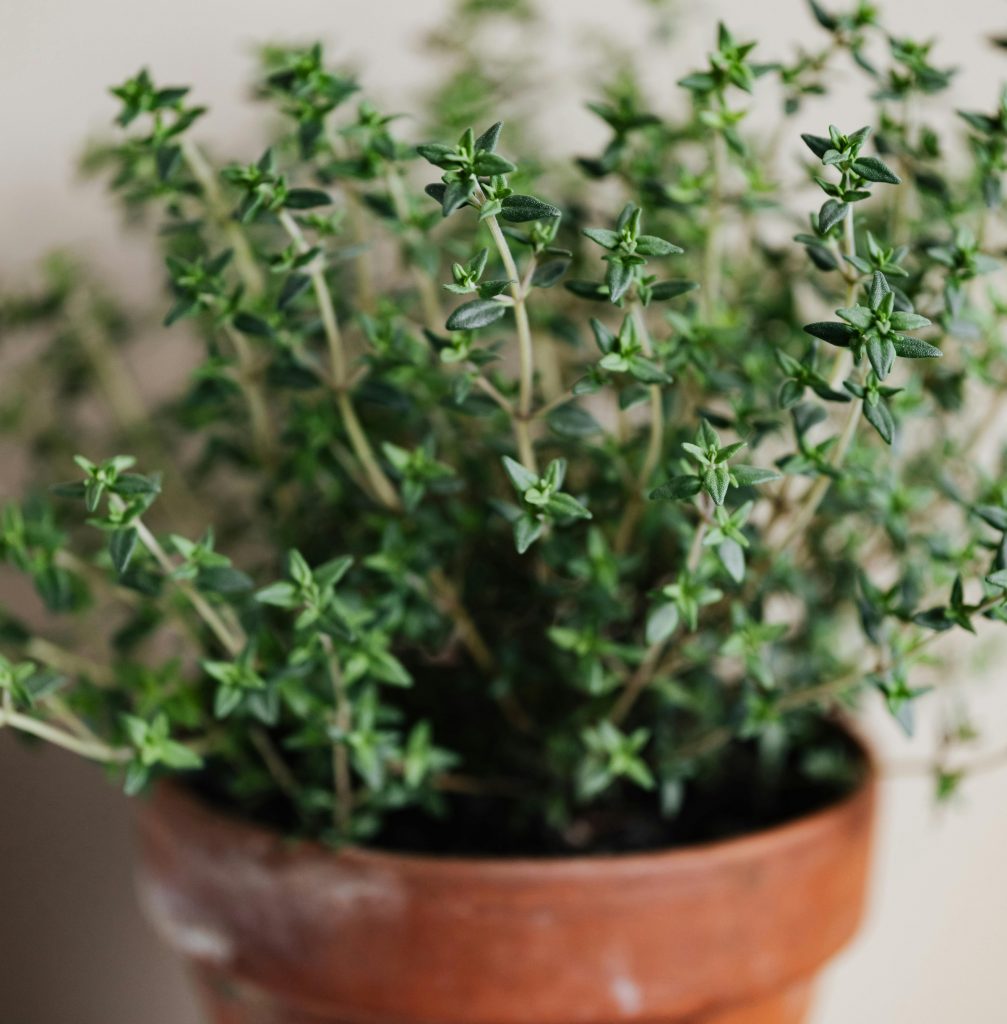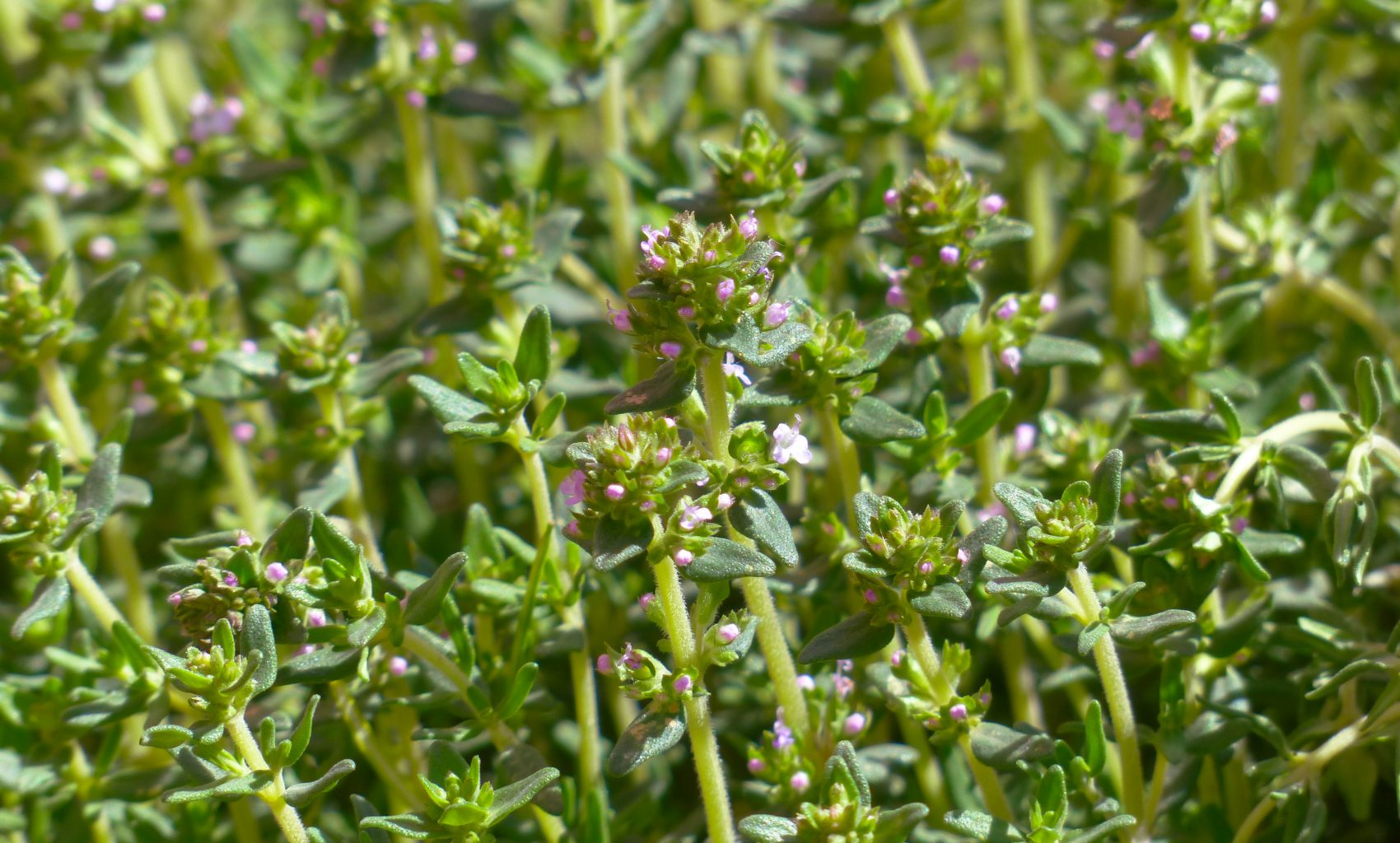Continuing our Flower Power series
Thyme

How would it be to live with Thyme?
The world of thyme may be larger than you think. With their dynamic fragrances, delicate blossoms and variety of growing habits, thyme provides a little something for everyone.
While this article deals with the most common culinary type of thyme (Thymus vulgaris), it is worth taking a look at the more than 200 different species and numerous varieties. There are creeping ground covers, upright shrubs and many others with various leaf shapes and flower colors. When perennial dwarf thyme shrubs are planted, for example, gardens can become veritable bee pastures.
Of the varieties, only about half a dozen thyme plants are considered suitable for cooking. The common Thymus vulgaris is one, but there are others such as Lemon, Oregano-scented, Orange and Caraway thymes which add unique flavor and fragrance to food.

A little background….
Thyme is of the genus Thymus and of the mint family Lamiaceae, which means it is related to other popular herbs such as sage and lavender.
Indigenous to the Mediterranean area, thyme was cultivated by the Ancient Egyptians and Greeks. The spread of thyme throughout Europe was thought to happen via the Romans as they used it for so many purposes, ascetic as well as culinary. Wild thyme still thrives in southern Europe, North Africa and the mountains of northeastern America.
The medicinal use and value of thyme has an incredibly long history going back to the Sumerians (3000 BCE) who used it as an antiseptic. It is a powerful soother for coughs and bronchitis, has muscle-relaxant effects and alleviates indigestion as well as numerous other effects. Thymol, thyme’s main aromatic component, is responsible for the plant’s antibiotic and antiseptic properties. Thymol is found in many commercial products such as the mouthwash Listerine, hand sanitizers and acne treatments.

Growing Thyme Indoors:
Thyme (thymus vulgaris) is culinary, aromatic and beautiful – some find their kitchen window perfectly situated so as to have a constant supply of fresh seasoning. It is a wonderful plant to grow indoors as long as it has at least 6 hours of sunlight and doesn’t get too soggy. Containers or pots are a great way to make sure the plant gets the conditions it needs because the pot can be easily moved as needed.
A terracotta or clay pot with drainage holes works well for thyme because it allows the herb to dry out between waterings so the roots don’t stay waterlogged. Thyme doesn’t seem to do well pots that are too small so it is best to use a pot that at least 6 – 7” (5 liter) with some gravel in the bottom. Fill the pot with a compost mix which is not too nutrient rich as these plants fare better with a light, airy structure low in nutrients.
Every year or two you may want to repot thyme or more often if it has outgrown its pot. Usually, spring or autumn is the best time to repot – you may even want to take some divisions and start some new thyme plants.

Harvesting Thyme:
Once your plant has plenty of foliage you can cut off stems, rinse them and then pick off the leaves. Or you can just run your thumb and index finger down the length to push the leaves off.
Chopped or whole, the leaves add flavor to sauces, soups and many other foods. Some cooks keep the leaves on the stems and allow them to stew when making stock, only straining them out after cooking. The leaves can be dried by spreading them on a baking sheet for a day or two.

How to use Thyme:
In France thyme is tied together with other fresh herbs such as parsley, rosemary and bay leaf in a “bouquet garni” which is added to soups, stews or sauces and removed just before serving. In the Middle East thyme is an important component of zahtar and dukka – two of their main seasoning combination. Another culture which relies heavily on thyme in their cook are the America Creole of New Orleans.
Thyme’s flavor retains much of its flavor when it is dried, unlike many other culinary herbs. If a recipe calls for 1 tsp. of dried thyme, you can substitute a tablespoon of chopped fresh thyme (and vice versa). If adding the dried variety, it is best to add it near the beginning of the cooking so the flavor can infuse into the dish. Actually, long and slow cooking improves the flavor of thyme which is, again, is unlike other herbs. Thyme sprigs also are very attractive as a garnish.
An intriguing recipe directs one to gently heat raw honey and then add thyme leaves and flowers. After covering and leaving the mixture in a warm spot for a time, the honey will taste strongly of thyme and can be used by the spoonful or to sweeten tea.

For those who like astrological associations, Thyme is linked with the planet Venus as well as the signs of Taurus, Libra and Cancer. Venus’s symbolism is aligned with love, love of beauty, relating to others and the true power of authentic attraction.
The word “thyme” is thought to be a derivative of the Greek word “thymos” which was associated with “fumigation” (as in the burning of incense in their temples). There were countless ways the ancient Greeks utilized the fragrance of thyme – in bathing, rituals, as hair decoration and more – all to enhance the style, poise and attractiveness of the wearer.
There is also another aspect to the Greek association. Some believe this plant’s name came from the Greek word “thymus” which meant courage. The warriors of ancient Greece were massaged with the oil of thyme in order to ensure they remained brave. These ancient warriors took thyme into battle because they believed it enhanced their energy on a physical level but also gave them a sense of clarity and direction for their soul, providing mental and spiritual abilities needed to attend to their destiny.
In modern herbalism there is a belief we can all use more Thyme as it is considered the oil of releasing and forgiveness, believed to remove negativity and leave the heart open.
With all that, and much more we’ve not covered, maybe some time with Thyme could be a good idea?
